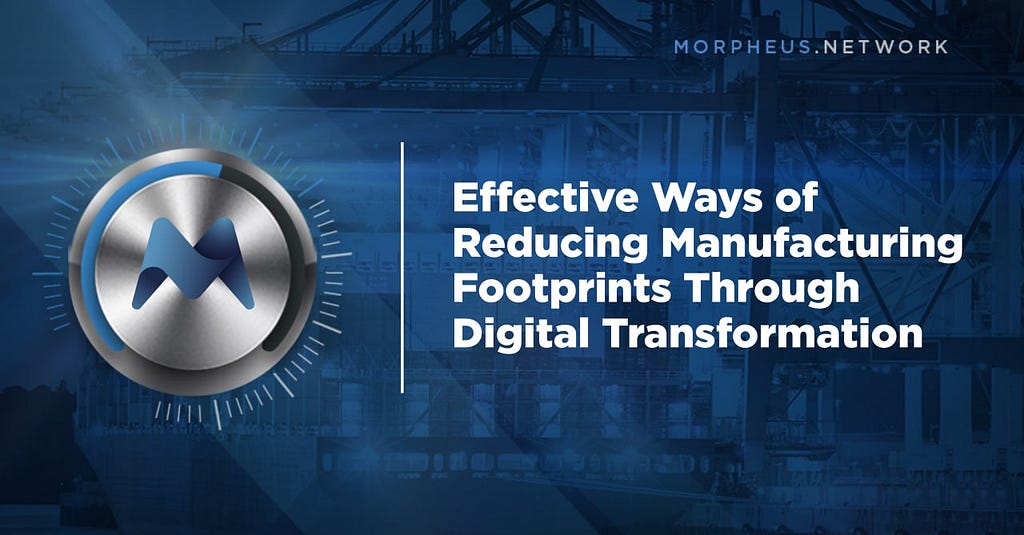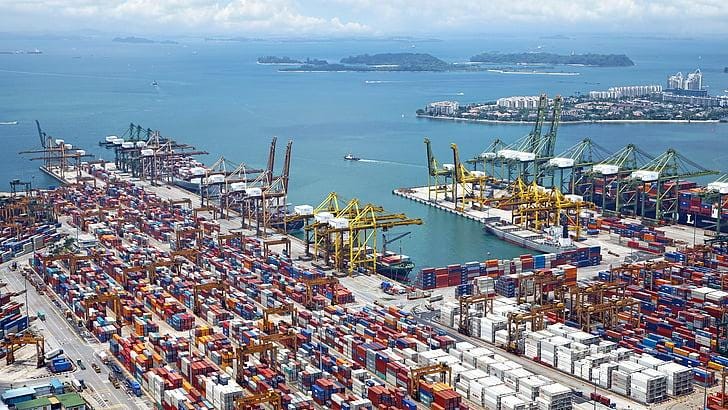Reducing Manufacturing Footprints Through Digital Transformation
1
0

In the last three years, sustainability practices within the business world have seen a shift due to unfortunate events. Before the pandemic, the reliance on globalization, due to internet access, was on the rise. Today, we are instead turning to deconsolidation and improved accessibility.
The Need for Reducing Manufacturing Footprints

To overcome supply chain disruptions and their negative impacts on business reputations and profits, the most effective solution lies in minimizing the footprint of manufacturing operations.
Manufacturing footprint refers to strategically developing production and operational activities around the value chain and geographical location. Undoubtedly, global trade offers a competitive price advantage. Yet, localization of manufacturing resources promises to provide long-term benefits like:
-Environmental sustainability
-Job creation
-No or minimum interference of foreign turmoil
-Better control over the supply chain
-Enhanced profitability
-Improved customer satisfaction
Nearshoring: An Effective Technique of Reducing Manufacturing Footprints
The trade war between the US and China, along with the effects of the global pandemic, and the Russia-Ukraine conflict, have all caused tremendous losses to businesses related to the supply chain. From semiconductor chip shortages, rising oil and gas prices, and growing issues concerning climate change, to overreliance on China as the sole major supplier, companies have been given the impetus to move towards nearshoring.
Nearshoring refers to a strategic shift in manufacturing capacities and a key supplier to a location near the clustered demand zone.
According to the Savills Nearshoring Index, a gradual shift is occurring from China to Vietnam, Thailand, and Bangladesh for Asian countries. Similarly, Mexico and Canada serve the U.S. region, while Poland and Slovakia are the new manufacturing hubs for European companies. The deliberate shift from offshoring to nearshoring accounts for the following benefits
Reduced Delivery Time
The global e-Commerce market is projected to grow by 9.30% by 2027, resulting in a market volume of USD 6.39 trillion. The massive rise is partly attributed to lockdown restrictions and habit forming. But the major deterrent remains the same-day delivery incentives.
To ensure reduced delivery times, companies must ensure transparent and robust supply chain management including accurate demand forecasting. Nearshoring offers an edge in achieving customer satisfaction through timely deliveries when unbound by logistic disruptions.
Avoiding Port Congestion
Port congestion is an unavoidable disruption with cross-border trades. According to a BBC report, the infamous 6-day-long Suez Canal blockage in March 2021 affected about 12% of the daily global trade, accounting for USD 14–15 million per day.
Port congestion results in a massive escalation in logistic costs and delivery time. Each blockage can potentially reduce the probability of timely delivery by half and thus percolating customer dissatisfaction. According to a report, a company may lose 69% of the repeat orders if the delivery time exceeds 2 days. Nearshoring offsets the need for port transportation and associated roadblocks.
China-Based Uncertainties
China has held a monopoly in mass manufacturing for decades. However, major tech companies like Apple, Google, Microsoft, etc. are progressively shifting their production capabilities to other developing economies.
Tensions over tariffs and the discord between Taiwan and other nations have caused a major shift in international trade. China’s extended “zero-Covid policy” has contributed to the supply chain disruptions as the rest of the world has started to recuperate from the lockdown but China.
Additionally, China is no longer the best-priced market. China’s manufacturing costs are escalating. Due to tripling labor costs over the past decade to more than USD 9300 per annum. As a result, companies like Foxconn are hiring at almost half monthly wages at alternate manufacturing locations like Vietnam.
Offsetting Carbon Footprint to Maximize Profitability
Global climate change worries and tightening ESG regulations have forced companies to adopt a net-zero carbon emission model. While implementing renewable resources for energy needs is on the rise, it constitutes only one-third of the generated carbon footprint. Further, carbon neutrality is capital-intensive and takes a hit on profitability.
Companies need to start from the base of the value chain to bring down their emissions without hurting the profits. Operations spanning many continents are a major cause of carbon emissions through transportation. While some companies are adopting fleet electrification and route optimization nearshoring eliminates the need for long-distance transportation altogether. It, thus, results in reduced emissions, transport costs, and capital investment to offset those emissions.
How Digital Transformation Assists in Reducing Manufacturing Footprints
The Global e-Sustainability Initiative (GeSI) estimates the reduction in total carbon emissions by 12 gigatons by 2030 with the implementation of digital solutions in different sectors of the global economy. Smart manufacturing (22%) and smart logistics (10%) will be major contributors. Smart manufacturing, including virtual manufacturing, automation, customer-centered production, circular supply chains, and smart services could reduce up to 2.7 gigatons of carbon emissions.
Potential reduction in carbon footprint with the integration of digitization by 2030 (Source)
Digital transformation enabling supply chain visibility integrated with nearshoring puts forward a promising picture in reducing manufacturing footprints. With advanced automation, fault detection is easy and fixable timely at the source. In traditional systems, it was possible only upon delivery, resulting in increased rejected freight.
The recent application of advanced hybrid cloud-based multi-enterprise supply chain networks in manufacturing is facilitating faster cycle time, reduced cost, and optimized operation of manufacturing plants. The amalgamation of Artificial Intelligence (AI), Machine Learning (ML), and Predictive Analysis with cloud databases drastically reduces the analysis time and hence, actionability.
All Digital is Not Beneficial: The Balance Between Digitization and Sustainability
Digitization generates and stores huge piles of data. While enterprises are counting the benefits of cloud computing, the adverse effect of data acquisition, transmission, and processing have been conveniently ignored. According to a study, the current total worldwide data storage corresponds to 2% of the global carbon footprint. The number is to increase with the predicted increase in logistics and e-commerce scale in the coming years.
In the classic case of “cause and effect”, judicious development and deployment of a standard framework for data-based carbon neutrality is a must. One way forward could be the “plug-and-play” carbon-neutral integration into the manufacturing system.
Final Words
The business world changes its preferences rapidly. From hyper-globalization, we are shifting towards deconsolidation to better meet the customer’s demands and environmental compliances. Sustainability is the new buzzword globally. Since supply chains contribute considerably to the total carbon footprints, the onus lies with policymakers working towards reducing manufacturing footprints. towards reducing manufacturing footprints. While nearshoring is an attractive option, digitization is an important ancillary to it. A better future requires the astute implementation of advanced digitization at a rapid pace.
About Morpheus.Network
At Morpheus.Network, we are intensely focused on helping companies and Government organizations remove barriers to digitize, optimize and automate their global supply chain operations. We help clients maximize revenue through digitization and process automation, protecting sensitive data, and untangling complex issues with the legacy supply chain system while delivering effective, equitable, and efficient global trade solutions.
Connect with one of our Specialist on how we can help you reduce manufacturing footprints through Digital transformation in less than 30 minutes
Join the conversation Follow us on Social Media!
Website | Telegram | Twitter | LinkedIn |Facebook| Instagram
Reducing Manufacturing Footprints Through Digital Transformation was originally published in Morpheus.Network on Medium, where people are continuing the conversation by highlighting and responding to this story.
1
0
 Verwalten Sie alle Ihre Kryptowährungen, NFTs und DeFi an einem Ort
Verwalten Sie alle Ihre Kryptowährungen, NFTs und DeFi an einem OrtVerbinden Sie sicher das Portfolio, das Sie zu Beginn verwenden möchten.




